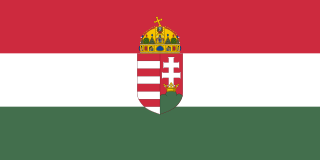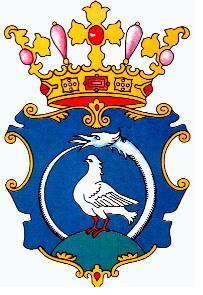Related Research Articles

Transylvania is a historical and cultural region in Central Europe, encompassing central Romania. To the east and south its natural border is the Carpathian Mountains and to the west the Apuseni Mountains. Broader definitions of Transylvania also include the western and northwestern Romanian regions of Crișana and Maramureș, and occasionally Banat. Historical Transylvania also includes small parts of neighbouring Western Moldavia and even a small part of south-western neighbouring Bukovina to its north east.

Cluj-Napoca, or simply Cluj, is a city in northwestern Romania. It is the second-most populous city in the country and the seat of Cluj County. Geographically, it is roughly equidistant from Bucharest, Budapest and Belgrade. Located in the Someșul Mic river valley, the city is considered the unofficial capital of the historical province of Transylvania. For some decades prior to the Austro-Hungarian Compromise of 1867, it was the official capital of the Grand Principality of Transylvania.

Huedin is a town in Cluj County, Transylvania, Romania.

Aiud is a city located in Alba County, Transylvania, Romania. The city's population is 21,307 (2021). It has the status of municipiu. The city derives its name ultimately from Saint Giles (Aegidius), to whom the first church in the settlement was dedicated when built.

Ursus Breweries, a subsidiary of Asahi Breweries Europe Ltd., is a Romanian beer producer. The company is based in Bucharest and owns 3 breweries in Timișoara, Buzău and Brașov as well as a craft mini-brewery in Cluj-Napoca and employs around 1,400 people. Ursus Breweries’ brands are: Ursus, Timișoreana, Ciucaș, Grolsch, Peroni Nastro Azzurro, Redd's, Stejar, Azuga, Pilsner Urquell, St. Stefanus and cider brand Kingswood.

Dej is a municipality in Transylvania, Romania, 60 kilometres (37 mi) north of Cluj-Napoca, in Cluj County. It lies where the river Someșul Mic meets the river Someșul Mare. The city administers four villages: Ocna Dejului (Désakna), Peștera (Pestes), Pintic (Oláhpéntek), and Șomcutu Mic (Kissomkút).
Gheorghe Funar is a nationalist Romanian politician, who rose to fame as a controversial mayor of Cluj-Napoca between 1992 and 2004.

Northern Transylvania was the region of the Kingdom of Romania that during World War II, as a consequence of the August 1940 territorial agreement known as the Second Vienna Award, became part of the Kingdom of Hungary. With an area of 43,104 km2 (16,643 sq mi), the population was largely composed of both ethnic Romanians and Hungarians.

Nord-Vest is a development region in Romania, created in 1998. As other development regions, it does not have any administrative powers, its main function being to co-ordinate regional development projects and manage funds from the European Union.

The Babeș-Bolyai University is a public research university located in Cluj-Napoca, Romania. Established in 1581 as Academia Claudiopolitana, it underwent several reorganizations over the centuries, eventually taking its current form in 1959 through the merger of Bolyai University and Victor Babeș University. It occupies the first position in the University Metaranking, initiated by the Romanian Ministry of Education and Research in 2016.

The Second Vienna Award was the second of two territorial disputes that were arbitrated by Nazi Germany and Fascist Italy. On 30 August 1940, they assigned the territory of Northern Transylvania, including all of Maramureș and part of Crișana, from the Kingdom of Romania to the Kingdom of Hungary.

Moldovenești is a commune in Cluj County, Transylvania, Romania. It is composed of six villages: Bădeni (Bágyon), Moldovenești, Pietroasa (Csegez), Podeni (Székelyhidas), Plăiești (Kövend), and Stejeriș (Kercsed). Vălenii de Arieș was a separate village until 1966, when it was absorbed into Moldovenești village.

The Capitoline Wolf Statue in Cluj-Napoca, Romania, is located on Eroilor Boulevard, in the city centre on the banks of the Someșul Mic River.

The Romanian National Opera, Cluj-Napoca is one of the national opera and ballet companies of Romania. The Opera shares the same building with the National Theatre in Cluj-Napoca.

The Lucian Blaga National Theatre is in Cluj-Napoca, Romania, sharing its building with the Romanian Opera.
The history of Cluj-Napoca covers the time from the Roman conquest of Dacia, when a Roman settlement named Napoca existed on the location of the later city, through the founding of Cluj and its flourishing as the main cultural and religious center in the historical province of Transylvania, until its modern existence as a city, the seat of Cluj County in north-western Romania.

The Unitarian Church of Transylvania, also known as the Hungarian Unitarian Church, is a Nontrinitarian Christian denomination of the Unitarian tradition, based in the city of Cluj, Transylvania, Romania. Founded in 1568 in the Eastern Hungarian Kingdom by the Unitarian preacher and theologian Ferenc Dávid, it is the oldest continuing Unitarian denomination in the world. It has a majority-Hungarian following, and is one of the 18 religious denominations given official recognition by the Government of Romania.

The second plague pandemic was a major series of epidemics of plague that started with the Black Death, which reached medieval Europe in 1346 and killed up to half of the population of Eurasia in the next four years. It followed the first plague pandemic that began in the 6th century with the Plague of Justinian, but had ended in the 8th century. Although the plague died out in most places after 1353, it became endemic and recurred regularly. A series of major epidemics occurred in the late 17th century, and the disease recurred in some places until the late 18th century or the early 19th century. After this, a new strain of the bacterium gave rise to the third plague pandemic, which started in Asia around the mid-19th century.

The following detailed sequence of events covers the timeline of Cluj-Napoca, a city in Transylvania, Romania.

Plague Column, also known as Holy Trinity Monument, is a Baroque monument in Timișoara's Union Square. It was placed in the central square of the city, then known as Domplatz, in 1740 as an ex voto of chamber councilor Johann Anton Deschan von Hansen. The monument belongs to the typology of plague columns, widespread in the Baroque era throughout the South German, Bohemian and Hungarian space.
References
- ↑ "history XVIII" . Retrieved 9 September 2016.
- 1 2 Demographic Changes
- ↑ "thekonst.net :: propaganda. weekly notes by konst :: the cradle of Romanian Revol." Retrieved 9 September 2016.
- ↑ "CLUJ-NAPOCA, The Treasure City of Transylvania, Romania - History" . Retrieved 9 September 2016.
- ↑ "www.croatians.com" . Retrieved 9 September 2016.